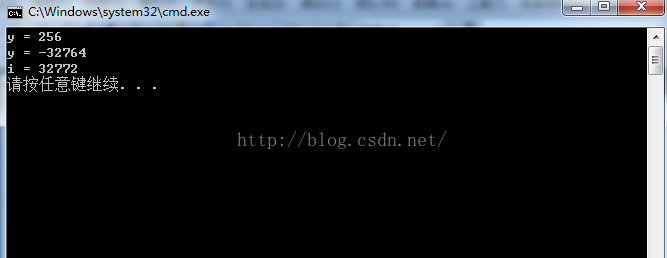
C#의 기본 데이터 유형에 대한 이전 연구에 이어 유형 간의 상호 변환에 대해 알아보겠습니다. C#의 유형 변환은 암시적 변환과 명시적 변환의 두 가지 범주로 나눌 수 있습니다.
암시적 변환:
암시적 변환은 시스템의 기본 변환으로 선언 없이 변환할 수 있습니다. 암시적 변환 프로세스 중에 컴파일러는 변환을 확인하지 않고 안전하게 변환을 수행할 수 있습니다. 예를 들어 int 유형에서 long 유형으로 변환하는 것은 암시적 변환입니다. 암시적 변환은 일반적으로 실패하지 않으며 변환 프로세스 중에 정보가 손실되지 않습니다.
예: int i = 100;
long a = i; 선언 Long 유형으로 변환
암시적 변환은 두 유형 모두에 적용되지 않습니다. 예를 들어 위의 long 유형을 int 유형으로 암시적으로 변환하면 성공하지 못합니다.
long a = 100,
암시적 열거 변환
암시적 참조 변환
암시적 숫자 변환:
암시적 숫자 변환에는 다음 유형이 포함됩니다.
sbyte 유형에서 short, int, long, float, double,decimal 유형으로;
ushort 유형에서 int, uint, long, ulong, floot, double, 10진수 유형으로; 🎜>int 유형에서 long, floot, double,decimal 유형으로
uint 유형에서 long, ulong, floot, double, 소수 유형으로
long형에서 float, double,decimal형으로
ulong형에서 float, double,decimal형으로
char 유형에서 ushort, int, uint, long, ulong, floot, double,decimal 유형으로
float 유형에서 double 유형으로; 🎜> 이렇게 쓰고 정리하자면, 간단히 말하면 저정밀도 타입에서 고정밀도 타입으로의 변환인데(정밀도와 데이터 정보가 손실되지 않기 때문입니다), 고정밀도 타입에서 저정밀도 타입으로의 암묵적인 변환은 없습니다. -정밀도 유형(일부 정보가 손실될 수 있으며 안전하지 않을 수 있음). 유형의 정밀도와 범위는 C# 학습일지 04를 참조하세요. 여기서 기억해야 할 점은 다른 유형에서 Char 유형으로의 암시적 변환이 없다는 것입니다.
암시적 숫자 변환 예:
using System;
using System.Collections.Generic;
using System.Linq;
using System.Text;
namespace Test
{
class Program
{
static void Main(string[] args)
{
byte x = 255; //byte 表示的范围0~255
short y = x; //将从byte到short隐式转换
y++;
Console.WriteLine("y = {0}",y);
y = 32767; //shot的范围 -32768~32767
int i = y + 5; //从 short 到 int 隐式转换扩大范围 结果是准确的
y+=5; //超出范围了结果会不准确
Console.WriteLine("y = {0}",y); //y超出范围数据会丢失部分
Console.WriteLine("i = {0}",i);
}
}
}using System;
using System.Collections.Generic;
using System.Linq;
using System.Text;
namespace Test
{
class Program
{
enum weekday //定义一个枚举类型
{ Sunday, Monday, Tuesday, Wednesday, Thursday, Friday, Saturday };
static void Main(string[] args)
{
weekday day;
day = 0; //隐式将0转换为枚举类型(只能是0)
Console.WriteLine(day);
}
}
}Sunday

클래스 유형 s에서 클래스 유형 t로 변환. 여기서 s는 t의 파생 클래스입니다.
using System;
using System.Collections.Generic;
using System.Linq;
using System.Text;
namespace Test
{
class person //定义了一个基类(父类) person
{
}
class person1 : person // person1 派生于基类person,person1就叫person的一个子类,
{
}
class Program
{
static void Main(string[] args)
{
person1 per = new person1(); //将子类person1实例化一个对象per
person Per = per; //将子类隐式转换为父类
}
}
}s 유형에서 인터페이스 유형 t로, 여기서 클래스 s는 인터페이스 t를 구현합니다. (인터페이스(인터페이스)에 대한 내용은 나중에 작성될 예정이므로 메소드 선언에만 사용하고 메소드 정의에는 사용하지 마십시오.)
using System;
using System.Collections.Generic;
using System.Linq;
using System.Text;
namespace Test
{
public interface Infa //定义了一个接口
{
void Output();
}
class person : Infa //定义一个person类继承于接口并实现方法
{
public void Output()
{
Console.WriteLine("Welcome");
}
}
class Program
{
static void Main(string[] args)
{
person per = new person(); //实例化
Infa fa = per; //从person到interface(接口)隐式转换
}
}
}인터페이스 유형 s에서 인터페이스 유형 t로 변환(여기서 t는 s의 상위 인터페이스임)
using System;
using System.Collections.Generic;
using System.Linq;
using System.Text;
namespace Test
{
public interface Infa //定义了一个接口
{
void Output(); //接口只声明方法,具体实现由它的派生类写代码决定
}
public interface infa1 : Infa //定义一个infa1接口继承于Infa接口
{
void input();
}
class person1 : infa1 //由infa1派生一个person1类,因为接口不能直接实例化
{
}
class Program
{
static void Main(string[] args)
{
person1 per = new person1 { }; //接口不能直接实例化,需要实例化一个派生于infa1接口person1类
Infa fa = per; //实现子接口到父借口隐式转换
}
}
}참조 유형 배열 s에서 참조 유형 배열 t로 변환(여기서 s는 t의 파생 클래스이고 배열 차원은 다음과 같아야 함)
using System;
using System.Collections.Generic;
using System.Linq;
using System.Text;
namespace Test
{
class Person //定义一个基类 Person
{
}
class person1 : Person //由基类派生一个子类person1
{
}
class Program
{
static void Main(string[] args)
{
person1[] per = new person1[5]; //实例化一个person1
Person[] Per = per; //实现隐式转换
}
}
}참조 유형 배열이 값 유형 배열인 경우 다음 코드는 오류를 보고한다는 점을 기억해야 합니다.
class Program
{
static void Main(string[] args)
{
int[] n_int = new int[10];
double[] n_doubel = new double[10];
n_doubel = n_int; //这里报错啦
}
}배열 유형에서 System.Array로 변환; (배열은 모든 배열 클래스 참조 이전 기사 ^_^)
using System;
using System.Collections.Generic;
using System.Linq;
using System.Text;
namespace Test
{
class Program
{
static void Main(string[] args)
{
int[] n_int = new int[10]; //实例化一个int类型的数组 n_int
Array arr = n_int; // Array表示的就是数组 所以不能Array[] arr
}
}모든 대표 유형에서 System.Delegate로 변환(대리자는 나중에 작성됩니다)
using System;
using System.Collections.Generic;
using System.Linq;
using System.Text;
namespace Test
{
class Program
{
public static int output(int s) //定义一个方法
{
Console.WriteLine("welcome,{0}",s);
return 1;
}
public delegate int mydel(int s); //声明一个委托(以后我会说到委托)
static void Main(string[] args)
{
mydel my = new mydel(output); //将 output方法委托给my
Delegate MYDEL = my; //向 MYDEL 隐式转换
}
}
}以上就是 C#学习日记16----隐式转换具体用例的内容,更多相关内容请关注PHP中文网(www.php.cn)!